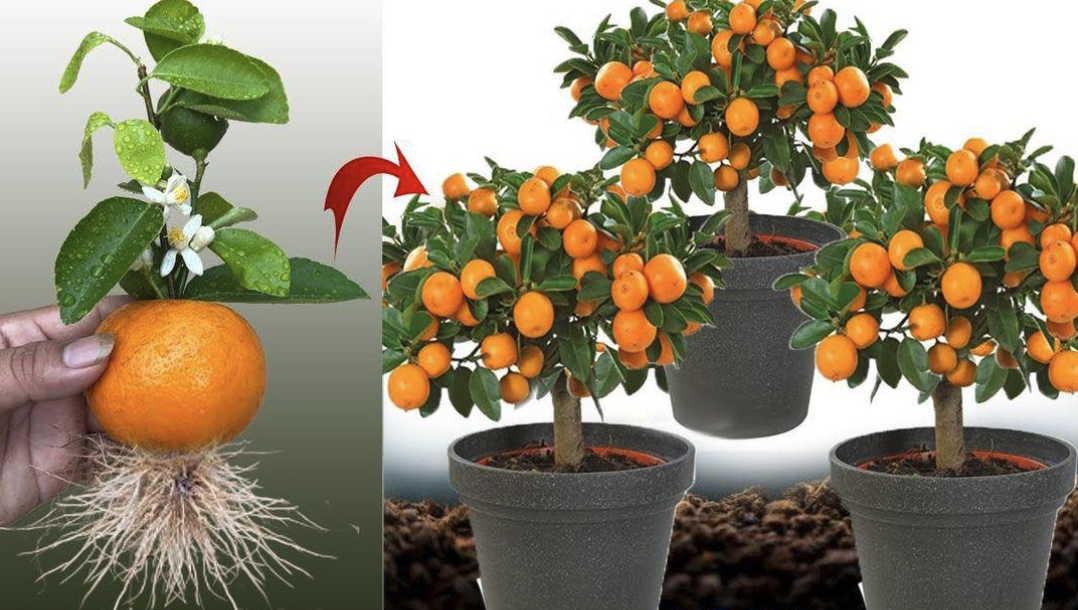Don’t buy tangerines again, learn to plant them at home


Imagine strolling into your backyard and plucking a succulent, ripe tangerine from your very own tree. The art of growing tangerines at home not only blesses you with a constant supply of delectable citrus fruits but also fills your heart with the joy of nurturing and reaping your harvest. In this comprehensive guide, we unveil the secrets to successfully planting and nurturing tangerine trees in your garden, granting you the privilege of relishing homegrown tangerines throughout the year.
Choosing the Perfect Variety:
The choice of tangerine variety is paramount for triumphant cultivation. Noteworthy selections encompass Clementine, Dancy, Honey Murcott, and Satsuma. Consider pivotal aspects such as climate compatibility, tree size, fruit attributes (seedlessness, ease of peeling, etc.), and your individual preferences when making your selection. Engage with local nurseries or gardening connoisseurs to pinpoint the ideal tangerine variety tailored to your specific locale.
Location and Soil Prerequisites:
Tangerine trees bask in the embrace of full sunlight. Thus, designate a garden spot that basks in a minimum of six to eight hours of direct sunlight daily. The soil, a key ally, should drain adeptly, as waterlogged conditions don't befit tangerine trees. If your soil leans toward heavy clay or lacks proper drainage, contemplate enhancing it with organic riches like compost or well-aged manure to invigorate both drainage and nutrient enrichment.
Planting Rituals:
Enact these rituals when planting your tangerine tree:
- Excavate a hole double the dimensions of the root ball, slightly shallower than the nursery growth depth.
- Tenderly extract the tree from its vessel, taking care to coddle the roots.
- Nestle the tree within the hole, assuring it occupies the same nurturing depth as before.
- Gently pack soil around the base, establishing a secure foundation.
- Deluge the freshly bedded tree generously to settle the soil and disband any trapped air.
Watering and Nutrient Nurturing:
Nurturing young tangerine trees mandates consistent hydration for the fortification of robust root systems. Administer profound, spaced-out waterings, permitting the soil to experience gentle drying intervals. With maturity, decrease watering frequency but escalate the volume per session. A mulch embrace encircling the tree's base both conserves moisture and thwarts invasive weeds.
Embrace your tangerine tree with a balanced citrus fertilizer following the manufacturer's directives. Administer the fertilizer during early spring and late summer, abstaining from autumn and winter application to avert vulnerable new growth susceptible to frosty harm.

Trimming and Vigilant Upkeep:
Pruning sessions wield influence in sustaining tangerine trees' contours, extricating lifeless or infected branches, and enhancing canopy ventilation and sunlight infiltration. Prune within the confines of late winter or early spring, preceding the onset of new growth. Banish any burgeoning suckers or branches beneath the graft juncture.
Vigilantly monitor your tangerine tree for potential pestilence and maladies, including aphids, scale insects, or citrus canker. Employ prudent tactics, be it through natural insecticides or consultation with local horticultural mavens, to govern and assuage any challenges that arise.

Embarking on the enchanting voyage of growing tangerines at home augments your existence with the tang and zest of these citrus jewels, plucked straight from your own domain. With judicious variety selection and the nurturing trifecta of watering, fertilizing, and pruning, you can foster robust tangerine trees, bountiful in their bestowal. Bid adieu to store-bought tangerines and initiate your odyssey of cultivating your own, ushering a delectable dimension of homegrown splendor into your life.
Source: https://grandmastricks.com
DISCLAIMER: THIS WEBSITE DOES NOT PROVIDE MEDICAL ADVICE The information, including but not limited to, text, graphics, images and other material contained on this website are for informational purposes only. The purpose of this website is to promote broad consumer understanding and knowledge of various health topics. It is not intended to be a substitute for professional medical advice, diagnosis or treatment. Always seek the advice of your physician or other qualified health care provider with any questions you may have regarding a medical condition or treatment and before undertaking a new health care regimen, and never disregard professional medical advice or delay in seeking it because of something you have read on this website.
